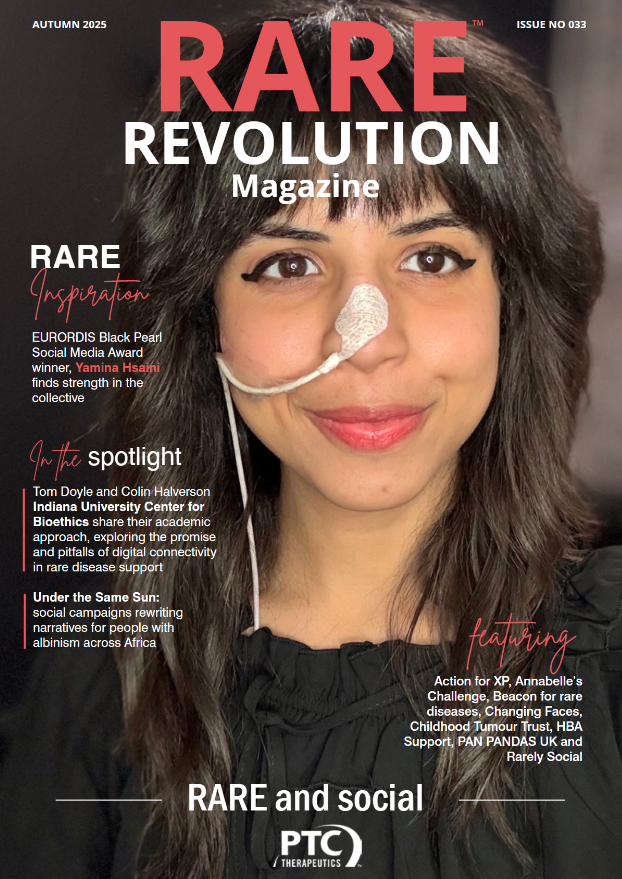A movement born from silence: The global mission to treat CTNNB1 syndrome

Written by: Lavra Debeljak, research and patient relations associate, CTNNB1 Foundation
In the rare disease world, silence can often be more devastating than the diagnosis itself. For families facing a rare condition, the lack of answers, research or even recognition can leave them feeling utterly alone. But in the case of CTNNB1 syndrome, a global movement is forming—led not by pharmaceutical giants, but by families, scientists, clinicians and advocates, who refuse to accept that “nothing can be done”
The CTNNB1 Foundation is a research-driven non-profit, founded in 2021, with one bold mission: to develop effective and safe treatments for CTNNB1 syndrome. From day one, we believed that progress in science must be driven by the people who need it most. Our work spans across scientific research, international collaborations, patient engagement and advocacy—but at its heart, it’s about giving hope to families navigating life with this rare diagnosis.
What is CTNNB1 syndrome?
CTNNB1 syndrome is a severe neuro-developmental disorder caused by mutations in the CTNNB1 gene. This gene plays a vital role in brain development and cellular communication, and when its function is disrupted, the impact can be profound.
Children born with this syndrome experience global developmental delays, limited or absent speech, low muscle tone and intellectual disabilities. Many are unable to walk independently, struggle with balance and coordination, and face behavioural challenges ranging from anxiety to sensory sensitivities. Importantly, early-onset retinal disease called Familial Exudative Vitreoretinopathy (FEVR) has also been observed, bringing an additional threat of progressive vision loss.
The syndrome is rare—affecting approximately one in 50,000 children worldwide—and it usually occurs de novo, meaning the mutation arises spontaneously rather than being inherited. Most families have never even heard of the condition before their child is diagnosed. In fact, because CTNNB1 syndrome was first identified only in 2012, it remains widely underdiagnosed and often even misdiagnosed as cerebral palsy.
For the families, life with CTNNB1 syndrome is like living in survival mode—constantly balancing medical appointments, therapies, dealing with behavioural challenges and sleepless nights. It’s also full of uncertainty and heartbreak. Milestones are missed or never reached. There are no approved treatments. No established clinical guidelines. Just resilience, and an ever-present hope that someone, somewhere, is working on a cure.
From diagnosis to determination
When Špela Miroševič, founder and president of CTNNB1 Foundation, received her son Urban’s CTNNB1 syndrome diagnosis on 25 March, 2020, her world shifted completely. She found herself facing a rare condition with no treatment, no research roadmap and few answers. But instead of standing still in the face of the unknown, she made a decision—she became the driving force of change.
From that determination, the CTNNB1 Foundation was born. Within a year of the diagnosis, the foundation was formally registered and soon after received recognition from the Ministry of Health in Slovenia. What began as one mother’s mission to help her son quickly evolved into a global effort to support all children affected by CTNNB1 syndrome.
Špela left her career, earned a PhD in biomedicine, and built a foundation from scratch. Together with scientists and clinicians, she developed URBAGEN, an AAV9 gene therapy targeting the central nervous system.




A non-profit with global impact
In the four years since its founding, the CTNNB1 Foundation has raised more than €4 million to accelerate research and development. The Foundation has partnered with international experts, launched an international natural history study to track disease progression, and published peer-reviewed research to guide the scientific community. Together with the Asociación CTNNB1 ESPAÑA, it has hosted two global CTNNB1 conferences, bringing together researchers, clinicians, and families to share insights, knowledge and experiences.
Perhaps most remarkably, the Foundation helped push through a legislative change in Slovenia, allowing the government to fund the development of non-commercial medicines for rare diseases in children. This achievement opened the door for €1 million in public funding to go towards the Foundation’s work.
This work has proven that a small, committed organization can change the future of rare disease research – and reshape how governments view early investment in therapies with no commercial backing. It’s not about replacing the industry, it’s about expanding the ecosystem. When governments step in early, they can encourage innovation and ensure access for those who would otherwise be left behind.
The power of gene therapy
The idea of developing a gene therapy for CTNNB1 syndrome was inspired in part by another story—the story of Irai, a young girl with AADC deficiency, a condition sometimes called juvenile Parkinson’s.
Irai became the first child in Europe to receive AAV-based gene therapy for her condition. The treatment was a turning point. Her journey proved what’s possible. And for the CTNNB1 Foundation, it became a model for what could be achieved with courage, collaboration, and vision.
A defining moment
In March 2025, the CTNNB1 Foundation reached a new milestone: the submission of our Orphan Drug Designation application to the European Medicines Agency for URBAGEN, an important next step for the Phase I/II clinical trial.
But as we stand at the threshold of a new chapter, we face our most urgent challenge yet. In order to submit the full clinical trial application and launch the trial, we must raise more than €300,000 in the next two months. Any delay could lead to financial penalties—and put at risk the precious therapy doses already manufactured for children who are waiting.
We’ve done everything we can to get to this point. But we cannot take the next step alone.
A call to the rare disease community
We are asking for support, not just from those directly affected by CTNNB1 syndrome, but from the wider rare disease community, from governments, from philanthropists and from anyone who believes that access to treatment should not depend on the size of your patient population.
We are calling on others to help us make history. Share our story. Raise awareness. Advocate for children affected by rare diseases like CTNNB1 syndrome by urging your government to partner with foundations like ours. And if you can, donate.
Because the truth is, our work is about more than one gene therapy. It is about proving that non-profit-led innovation can reach the clinic. It is about showing that families and scientists together can do what the system often cannot. And it is about ensuring that no child is too rare to be worth the investment.
This is how change begins, one step at a time. We’ve taken those first steps. Now, we need others to walk beside us.


